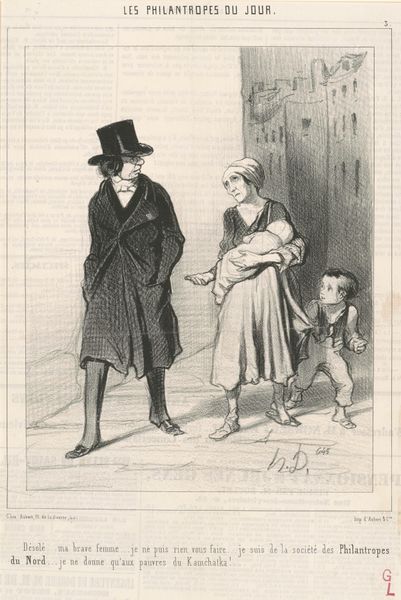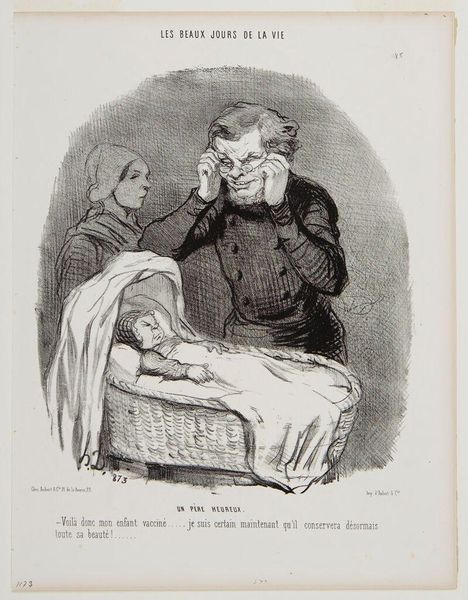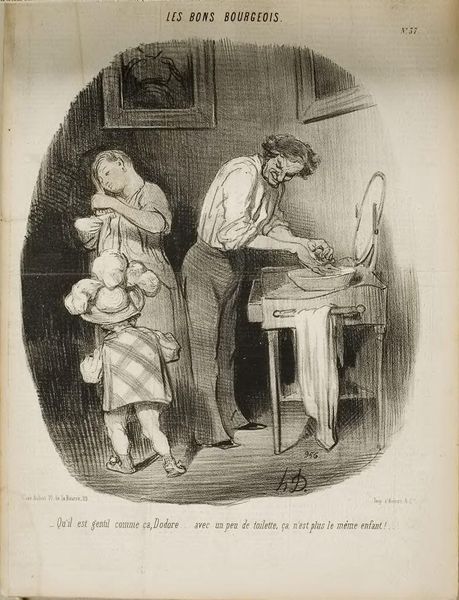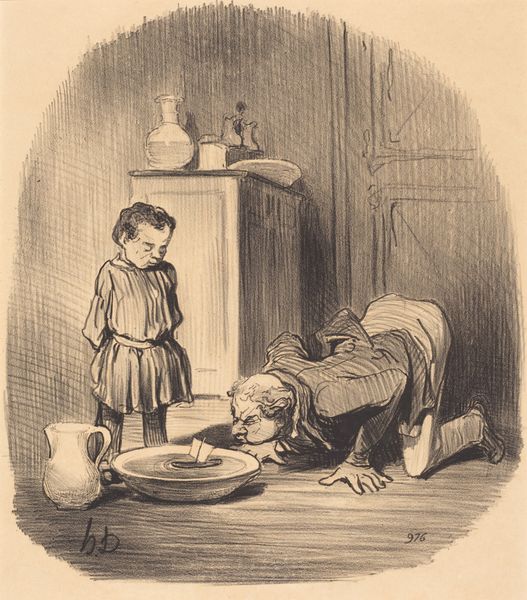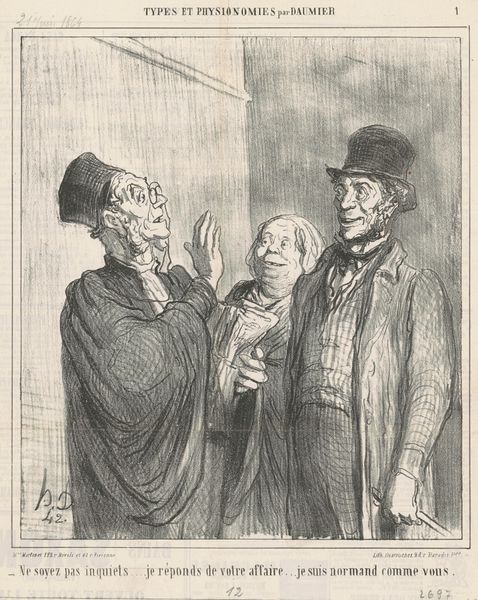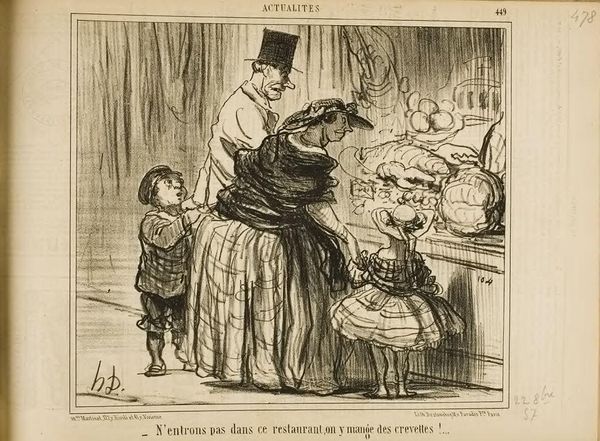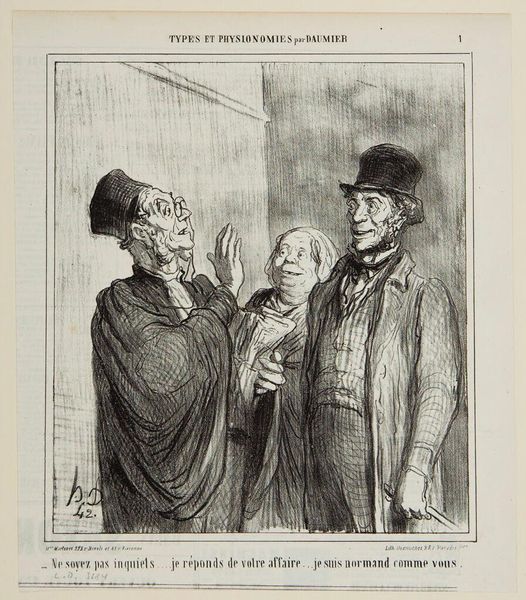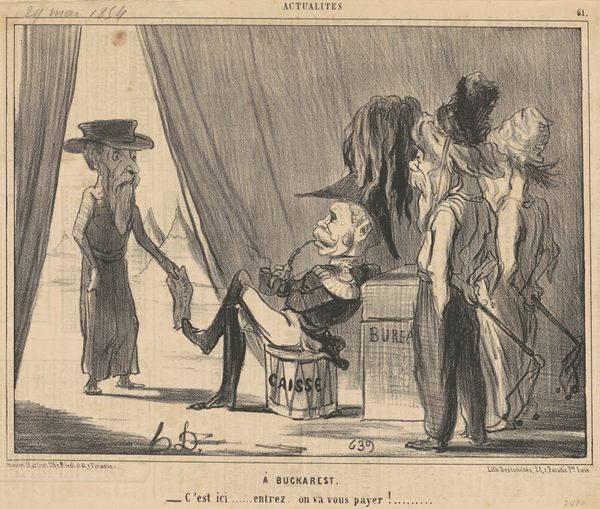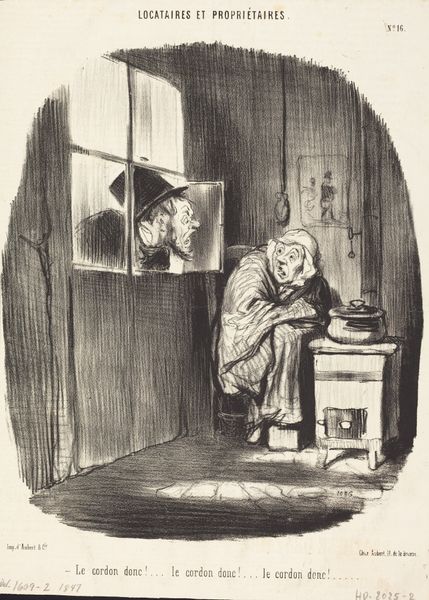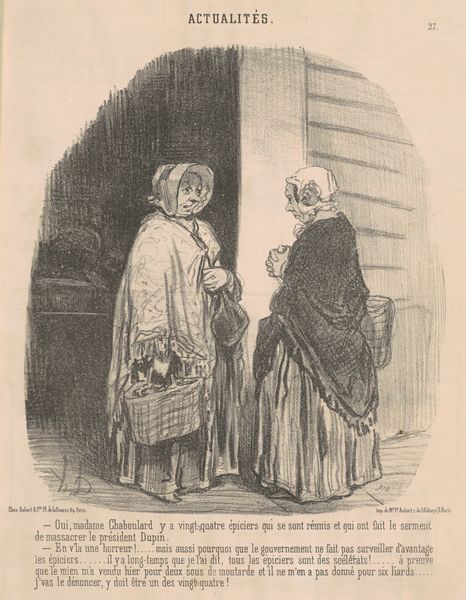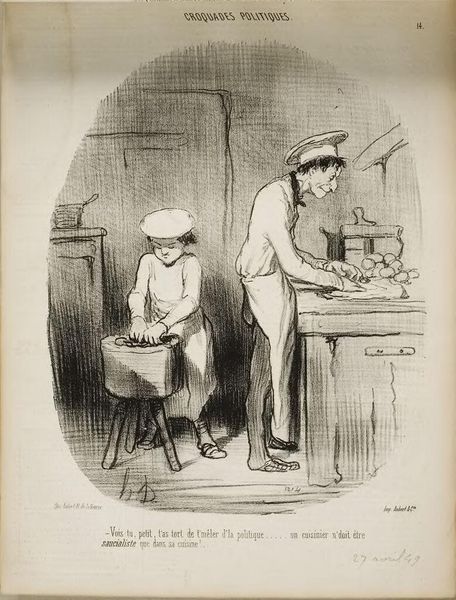
lithograph, print, poster
#
narrative-art
#
lithograph
# print
#
symbolism
#
genre-painting
#
poster
Copyright: Public domain
Curator: This is Théophile Alexandre Steinlen’s 1889 lithograph poster, "Y'En A Encore Quand Y'En A Plus." The title translates roughly to "There’s Still More When There Is No More." Editor: My first impression is of stark intimacy – a muted scene lit by the precarious glow of a candle, with a figure hovering over another shrouded in shadows. It's immediately melancholic. Curator: Steinlen was known for depicting the struggles of the working class, and this piece, originally a poster, reflects that. The phrase refers to persistent poverty and resonates within discourses of social and economic hardship. It pushes viewers to acknowledge systemic issues of gendered and classed disparity. Editor: The candle he holds aloft seems significant—an archetypal symbol for hope or knowledge, flickering precariously here. I notice the abandoned shoes by the bedside as well; those details seem pregnant with symbolic meaning of domestic disturbance or financial precariousness. What readings have been explored? Curator: Interpretations range from critiques of the patriarchal domestic sphere to commentary on state policies impacting women's reproductive health, situating it in wider conversations about social responsibility. Some theorists have noted its function within contemporary narratives that emphasize identity, gender, race, and poverty. Editor: And culturally? I can't help but wonder how the French audience of the time would've decoded these visual signals. The very fact that the phrase suggests endurance or resilience hints that the candle flame signifies a continuation and tenacity over time. Curator: It engages debates regarding gendered power dynamics, demanding an active interrogation of entrenched societal norms and material effects on those rendered vulnerable within uneven relations. This connects it with currents exploring how such images uphold cultural mythologies about precarity that persist across eras. Editor: Thank you for these interesting approaches; it’s intriguing how seemingly small visual decisions ripple with possible psychological and historical intent, enriching the viewers interaction with visual culture. Curator: Agreed! Analyzing art through a social, feminist, and philosophical lens gives voice to untold or unseen parts of the image that help provide social and historical understanding and make Steinlen's images enduring today.
Comments
No comments
Be the first to comment and join the conversation on the ultimate creative platform.
